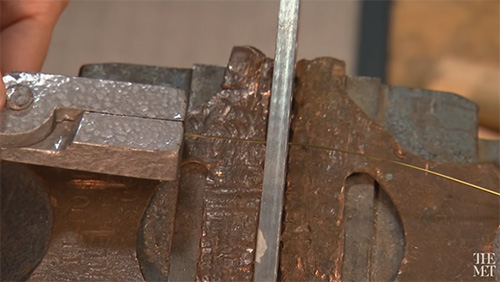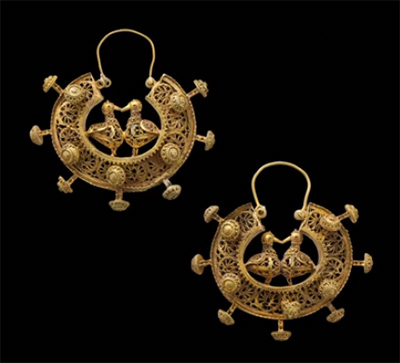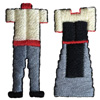 The jewelry making crafts are ancient, and, to tell you the truth, many of these techniques haven’t changed much throughout the centuries. But some have. Let’s take the wire jewelry making. It was invented around 2,000 years B.C. At that time, jewelry makers flattened gold nuggets into sheets, cut them into strips, and rolled these strips into round, wire-like shape. Such gold wire was used to make beautiful jewels. Today, jewelers use another technique, which was discovered in Ancient Rome. So, how do we make wire jewelry these days?
The jewelry making crafts are ancient, and, to tell you the truth, many of these techniques haven’t changed much throughout the centuries. But some have. Let’s take the wire jewelry making. It was invented around 2,000 years B.C. At that time, jewelry makers flattened gold nuggets into sheets, cut them into strips, and rolled these strips into round, wire-like shape. Such gold wire was used to make beautiful jewels. Today, jewelers use another technique, which was discovered in Ancient Rome. So, how do we make wire jewelry these days?
Gold wire when heated can be pulled through a drawplate to create a smaller diameter, which can then be used to create the effects of twisting, beading, spiraling, and ornamental filigree.

Process of wire jewelry making
Starting with a rod-shaped ingot, the gold is hammered out to a smaller diameter and then pulled through a drawplate to the desired thickness.

To begin, the metal is stretched with a hammer and then the ends are filed to a taper. This is necessary to be able to pull the wire through smaller holes in the drawplate.


First, the wire should be annealed or softened with heat in order to stretch the metal more easily.
The wire is pulled through increasingly smaller holes, becoming thinner and longer.
After pulling the wire through 2 or 3 courses, it should be annealed again, as it will become work-hardened.
This continues until the desired thickness is achieved.
There are many simple techniques to create different visual effects with wire. Wire can be twisted by doubling over the wire, fixing one end in device and turning the other end.
Twisting wire is often used as a border element on jewelry pieces.


Striking wire with a chisel creates a pattern on the surface of the wire, which is often used to mimic granulation. The raised, bead-like surface that forms between the chisel marks, reflects light, much like a granulated surface does and it's much easier to do.


Showpieces from The Met (The Metropolitan Museum of Art)
Pair of gold earrings, Iran, the 11th-12th century

Gold nose ornament with spiders, Peru, Salinar, the 1st century B.C. – the 2nd century A.D.

Gold double crocodile pendant, Cote d’lvoire, Lagoon peoples, the 19th – mid-20th century

(c)


